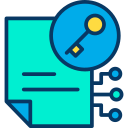
Customizing Training Platforms for Your Business
Welcome to our deep dive into Customizing Training Platforms for Your Business—practical stories, proven tactics, and creative ideas to shape a learning experience that looks, feels, and performs exactly like your organization.
Why Customization Matters More Than Features
Customization connects your strategic priorities to daily learning moments. When compliance, sales readiness, or safety shows up as targeted pathways and clear dashboards, employees understand the why behind the modules and leaders finally see training as a business multiplier.
Mapping Business Goals to Learning Journeys
Frontline associates need short, mobile-first bursts, while specialists need deep labs and simulations. Map tasks to micro-competencies, then bundle them into sequences that match a workday. Customizing training platforms for your business starts here: actual jobs, not abstract catalogs.

Brand, Trust, and User Experience
Apply your logo, typography, colors, and tone to reinforce trust. Use branded templates for courses, emails, and certificates. Consistency tells employees that learning is not an outsourced afterthought; it is an integrated part of your business and career journey.
Integrations, Data, and Security
Single Sign-On That Reduces Friction
Implement SSO with SAML or OpenID Connect so people enter once and start learning immediately. Fewer passwords mean fewer support tickets, smoother adoption, and a clear path to reliable usage data tied to real identities and roles across your organization.
HRIS, CRM, and Helpdesk Integrations
Sync roles from your HRIS, trigger product training from your CRM, and surface just-in-time lessons in your helpdesk. Custom connectors turn training into a workflow companion instead of a destination, meeting employees right where they already work.
Analytics That Power Decisions
Design dashboards that blend learning data with performance metrics. Correlate course completion with sales outcomes or safety incidents. When leaders can trace cause and effect, budgets shift from nice-to-have to must-have, supporting deeper customization and iteration.
Personalization and Adaptive Learning
Create a shared skill taxonomy linked to roles and projects. Use assessments to place learners, and adaptive rules to close gaps. Customizing training platforms for your business means your skill map evolves with new products, regulations, and strategic bets.
Change Management, Rollout, and Ongoing Engagement
Launch with a cross-section of roles, define success criteria, and collect qualitative stories alongside metrics. Pilots reveal the tweaks that matter—like shortening mobile modules or rewording prompts—so your full rollout lands smoothly across locations and teams.
Change Management, Rollout, and Ongoing Engagement
Recruit respected peers to model behaviors, host office hours, and share tips. Build topic communities where questions turn into micro-lessons. When the platform feels social and supported, engagement sustains itself without constant top-down reminders or campaigns.


